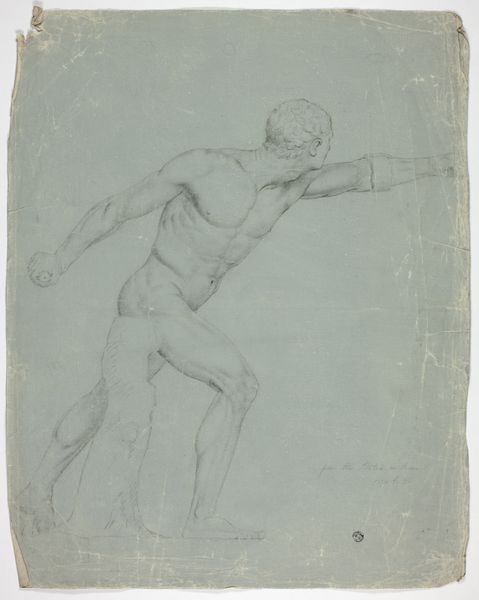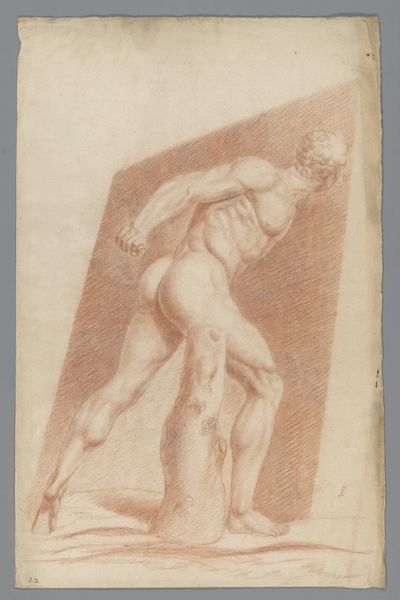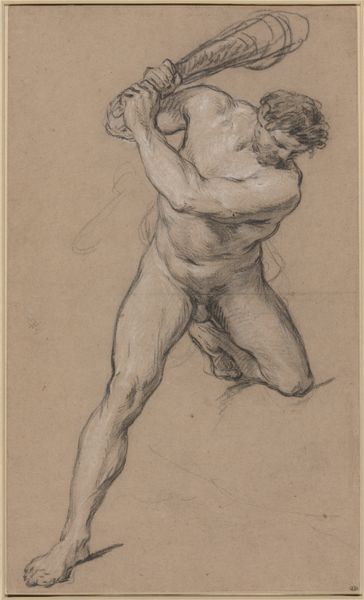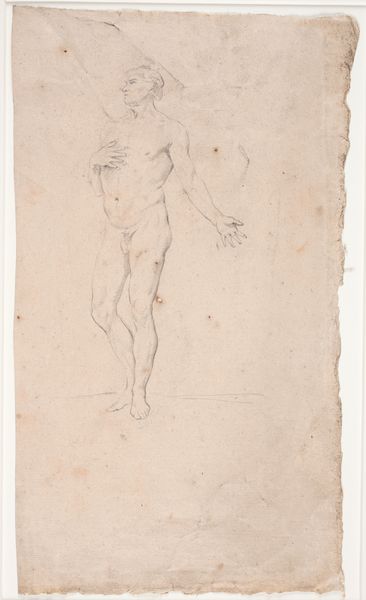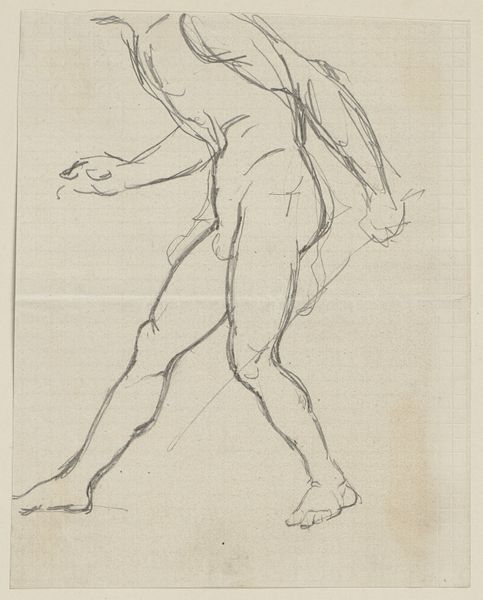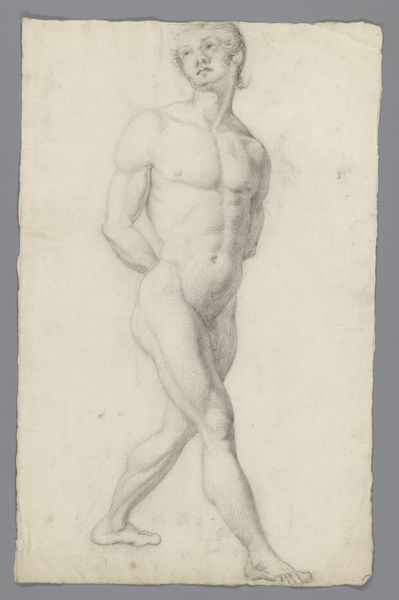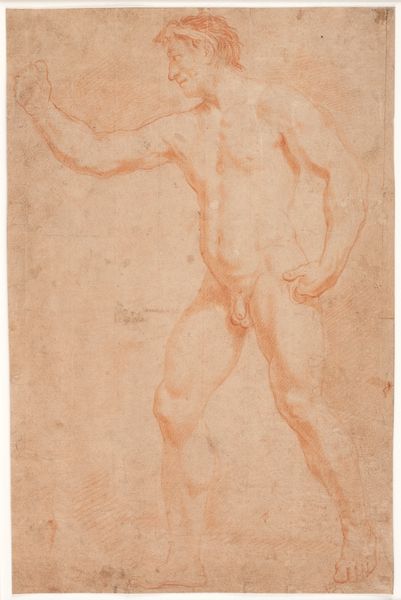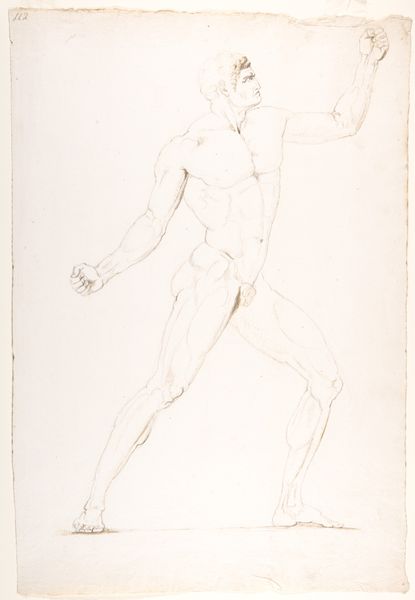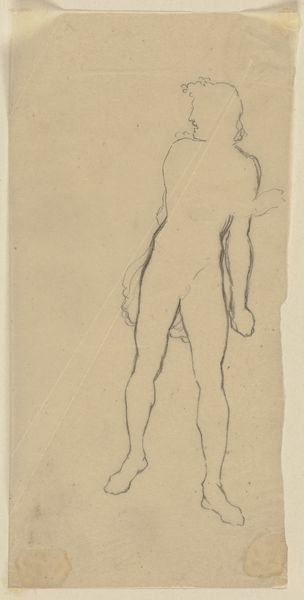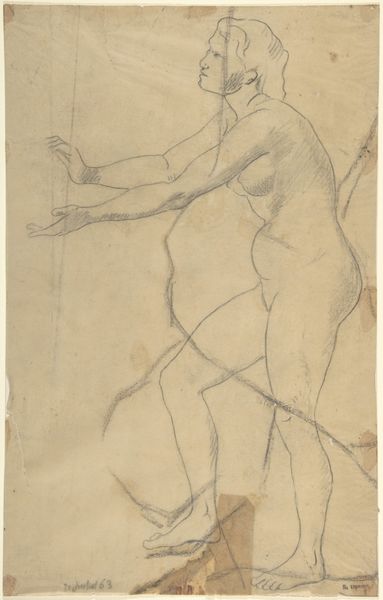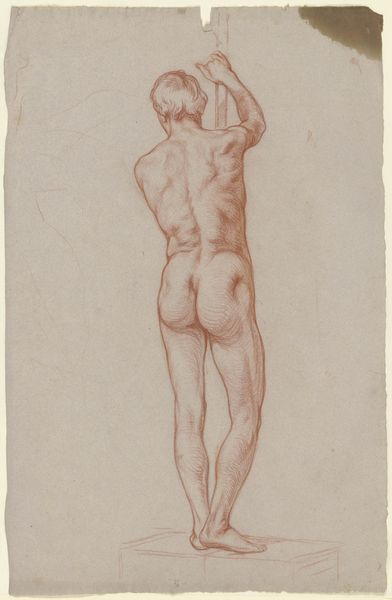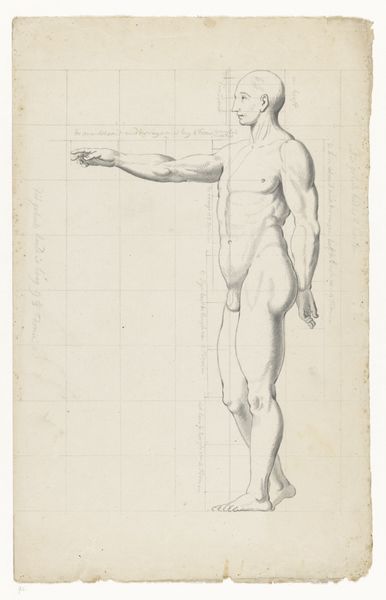
drawing, pencil
#
drawing
#
landscape
#
classical-realism
#
figuration
#
pencil
#
line
#
academic-art
#
nude
Dimensions: height 508 mm, width 335 mm
Copyright: Rijks Museum: Open Domain
Curator: Here we have "Study for an Image of an Athlete," created sometime between 1809 and 1869 by Alexander Cranendoncq. It's a pencil drawing currently held in the Rijksmuseum collection. Editor: Immediately, the stark linearity and the use of red chalk create an impression of anatomical intensity. The subject seems suspended in mid-motion. Curator: It’s certainly an intense piece. Consider how academic art instruction at the time often focused on the male nude as the ultimate subject, a standard inherited from classical traditions. This drawing most likely served as preparatory work for a larger composition, likely with themes of heroism or athleticism meant to elevate and instruct the public. Editor: The cross-hatching provides a good sense of volume, but also suggests a study, almost like a blueprint that emphasizes the precise muscular structure beneath the skin. There’s a reductionist aesthetic that gives a sense of almost technical precision. Curator: Yes, exactly! We can consider this work in the tradition of idealized representations of the human form – reflecting values promoted by social institutions that aimed to promote notions of masculine strength and physical prowess within nineteenth-century society. The artist may have drawn this in art academies and the drawing could be regarded as academic practice, or as preparation for other artworks of the same artist, it shows their mastery and technique. Editor: Yet, even as a study, it possesses a complete feeling. The dramatic use of light gives the figure a sculptural presence against the ground of the paper. It strikes a careful balance of dynamic energy and restraint. Curator: Indeed, Cranendoncq successfully evokes a sense of human potential. While the formal language adheres to conventions of the period, it invites us to explore how artworks can reflect, shape, and embody broader ideals within culture and history. Editor: Ultimately, its beauty lies in the tension between surface and underlying structure, rendering a single athlete in motion and anatomy and form as a perfect match.
Comments
No comments
Be the first to comment and join the conversation on the ultimate creative platform.
